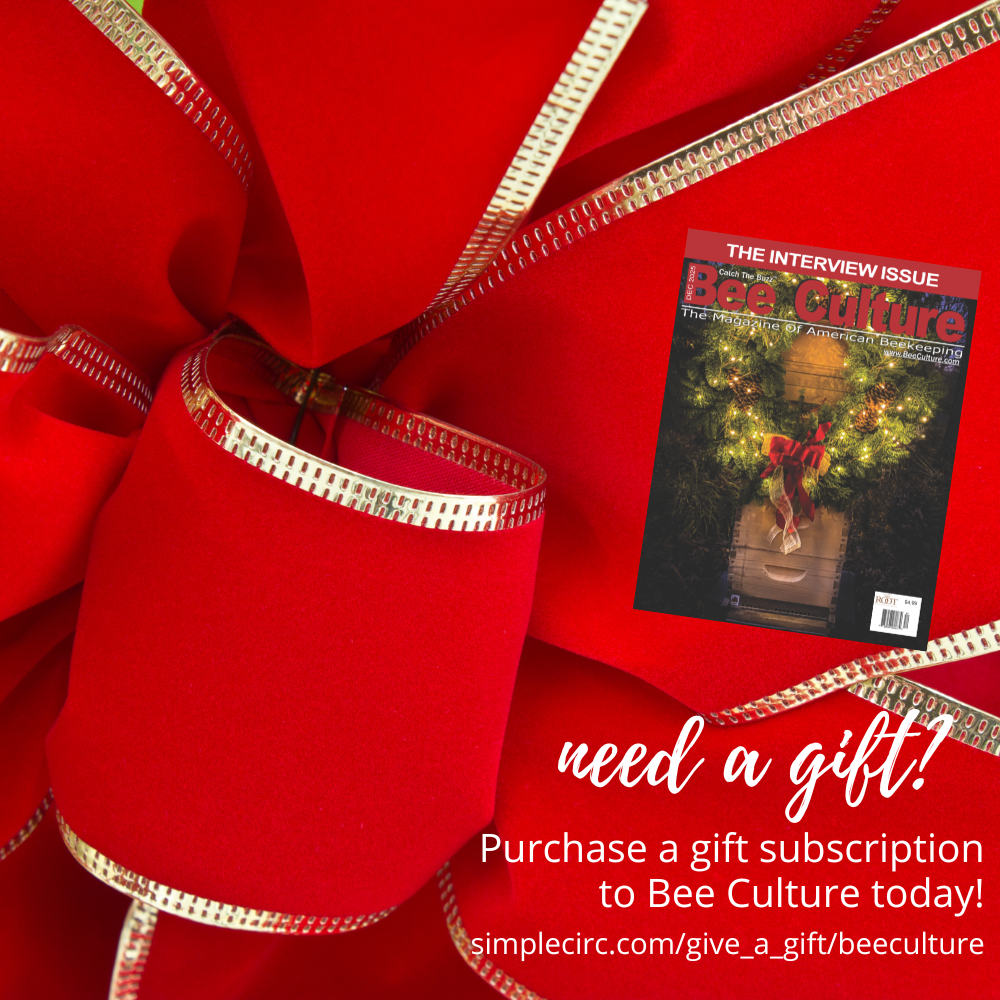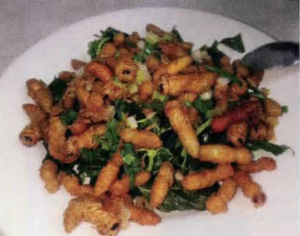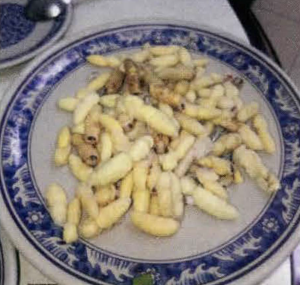By: Kathy Keatley Garvey
This article originally appeared in the Autumn 2020 issue of BEEKeeping Your First Three Years
So says UC Davis-trained entomologist Matan Shelomi, assistant professor of entomology at the National Taiwan University in Taipei, Taiwan, whose course on “Edible Insects” is the largest in his department.
Shelomi, a graduate of Harvard University, holds a doctorate in entomology from UC Davis, where he studied with major professor Lynn Kimsey, who directs the Bohart Museum of Entomology and serves as a professor of entomology in the Department of Entomology and Nematology.
Shelomi recently posted an intriguing comment on the Facebook page, Is This a Murder Hornet?
“More like delicious hornet,” he wrote.
Asian giant hornets, sensationally nicknamed “murder hornets” by non-entomologists, continue to grab front-page continue headlines. The first colony detected (and eradicated) in North America occurred last September on Vancouver Island, British Columbia. Then a single a dead one was found in Blaine, Wash., in December.
The world’s largest hornets (they can measure approximately 2″ in length), they attack and kill honey bees and feed the remains to their young. They can decimate a hive. Thus, beekeepers worry that AGH will invade North America, become established, and cripple the apiculture industry. The Washington State Department of Agriculture and Washington State University Extension are asking residents to keep a lookout for them and report any sightings.
The newly acquired nickname, “murder hornet,” triggers fear. But amid the panic, terror and near hysteria, it’s important to point out that there is NO national invasion and they are NOT coming for us.
This insect was previously known as the Asian giant hornet or AGH before the BBC, the New York Times and other media labeled it “the murder hornet.”
UC Davis distinguished professor Walter Leal, who studied and worked in Japan, and speaks Japanese, says someone’s mistranslation of Japanese research led to “yellow” translated as “killer.” Leal told us: “The Asian giant hornet, Vespa mandarinia, is called “Kiiro Suzume Bachi” in Japanese. It injects its venoms, sometimes inducing severe anaphylaxis. The translation is incorrect. Kiiro means yellow, but it was translated as “killer.”
Indeed, the BBC report on May 4 managed to insert “coronavirus,” “murder hornets” and “terror” in the same sentence. The Lede: “Even as the US remains under attack from the coronavirus outbreak, a new terror has arrived: ‘murder hornets.”‘
Not “murder” hornets to Matan Shelomi: “Delicious hornets.”
On the newly created Facebook page dispelling the myths and misinformation about the giant hornet, Shelomi posted photos of Vespa mandarinia larvae and pupae dishes, “raw and fried, from a small restaurant in Hualien in eastern Taiwan. You can also find it in the Huaxi night market in Taipei, if it’s in season.”
“Several bee and wasp species have edible brood, which can be fried, steamed, roasted, cooked with soy and sugar, or eaten raw,” Shelomi wrote. “Even honey bee brood is edible! While it’s not exactly commonplace, Asian giant hornet has been or is still consumed in parts of China, Japan, Taiwan, and northeastern India.” (Source: Edible Insects of the World by Jun Mitsuhashi)
“To get the brood, you must harvest the nest. ‘Isn’t that dangerous,’ you ask? Yes, in the same way extracting honey is dangerous. Stay safe by collecting at night when they are resting, using smoke to pacify them, and wearing protective clothing. To find the nests of edible wasps, Japanese harvesters tie a cotton ball to a piece of fish meat and present it to a female wasp. She will carry it home, and you can follow her to find the nest! That’s a bit harder with the giant hornet, as they can travel 2km on their foraging runs. They are not exactly rare in East Asia (for now), so those in the know can find nests easily. A helpful trick is to harvest the adults first. At night, knock down the nest, put a big bowl of rice wine in front of the entrance, and shine a bright light. The wasps get stunned by the light and Fall into the wine. You can then harvest the adults and steep them in wine to make a medicinal alcohol, and take the brood as a snack. Who’s murdering who now!”
“In case you were wondering, fried murder hornet tastes like French fries: if you can eat a potato, you can eat a pupa. That said, if you are allergic to shellfish, you may also be allergic to insects and should not consume them.”
“Oh, and insects cannot get any coronaviruses, so don’t worry about that either. Save a pangolin; eat a wasp.”
Shelomi’s post prompted Facebook member Geevee Snow of Brooklyn, N.Y., to comment: “My stomach just growled.”













